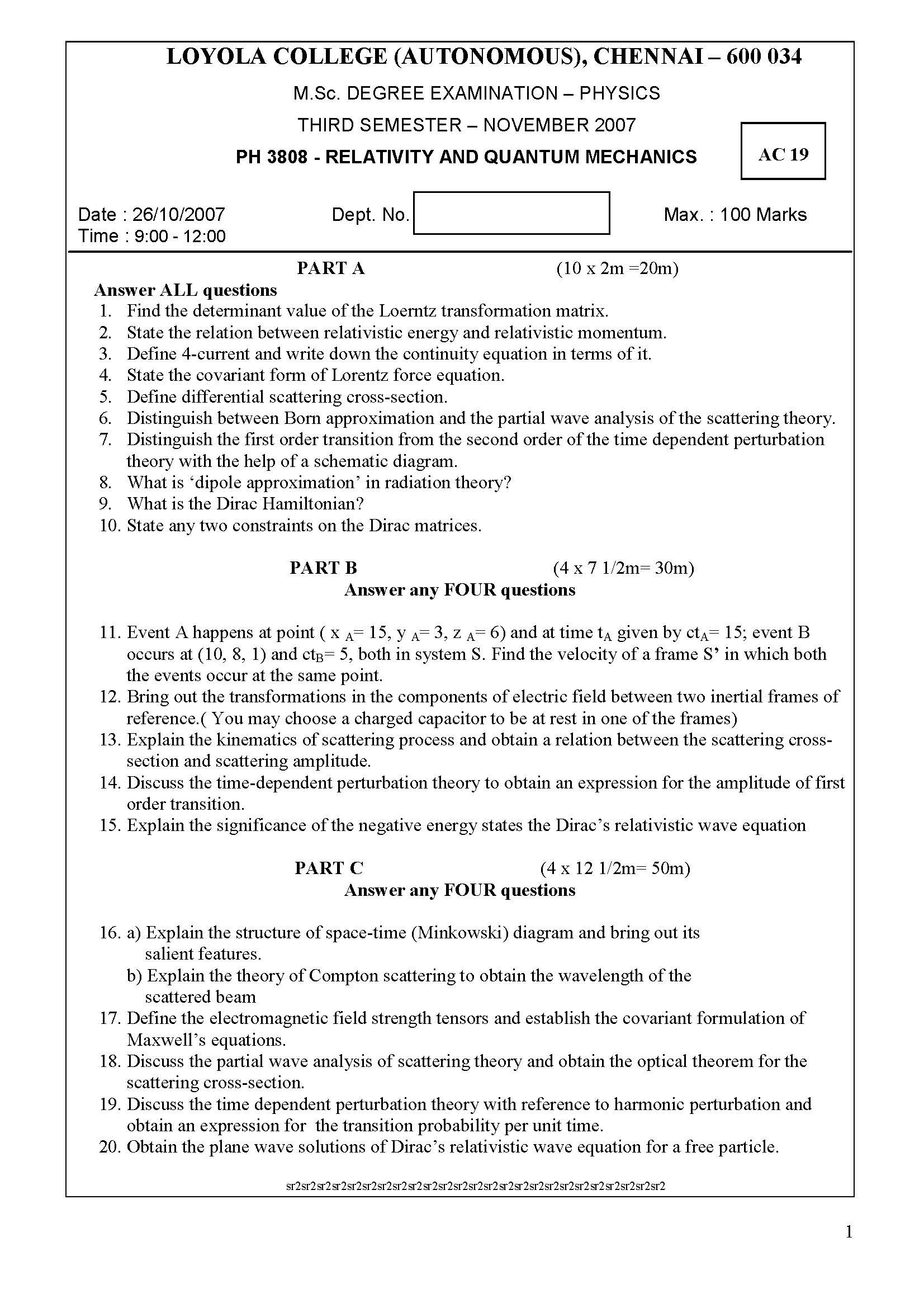LOYOLA COLLEGE (AUTONOMOUS), CHENNAI – 600 034
|
M.Sc. DEGREE EXAMINATION – STATISTICS
FOURTH SEMESTER – APRIL 2007
ST 4955 – RELIABILITY THEORY
Date & Time: 25/04/2007 / 9:00 – 12:00 Dept. No. Max. : 100 Marks
SECTION-A (10 × 2 = 20 marks)
Answer ALL the questions. Each question carries TWO marks
- Define the structure function of the system. Write down the structure function for k out of n structure.
- If x is a path vector and y ≥ x, show that y is also a path vector.
- If X1, X2, …, Xn are associated binary random variables, show that
(1-X1),(1-X2),…,(1-Xn) are also associated binary random variables.
- Show that F is IFRA if and only if (αt) ≥ α(t) for all 0<α<1 and t≥0.
- What do you mean by
- the number of critical path vectors of component i and
- relative importance of component i?
- Define the terms:
- System Reliability
- Steady state availability
- If r(t) = λ; λ,t>0, obtain the corresponding probability distribution of time to failure.
- In the usual notation, show that MTBF = R*(0).
- Obtain the reliability of a parallel system consisting of n components, when the reliability of each component is known. Assume that the units are non-repairable.
- Explain in detail an n unit standby system.
SECTION- B (5 × 8=40marks)
Answer any FIVE questions. Each question carries EIGHT marks
- Consider 2 out of 3 system. Determine the number of critical path vectors of each component. Also determine the relative importance of each component. Are all the three components equally important?
- Let h be the reliability function of a coherent system. Show that
h( p Ц p‘) ≥ h( p ) Ц h( p‘)for all 0 ≤ p , p‘ ≤ 1.
Also show that the equality holds if and only if the system is parallel.
- Suppose T1, T2, T3,…,Tn are the random variables that are associated. Show that
- any subset of the associated random variables is also associated
- A set consisting of a single random variable is associated.
- If X1, X2, …, Xn are associated binary random variables show that
n n
- a) P [ Π Xi=1] ≥ Π P [ Xi=1]
i=1 i=1
n n
- b) P [ Ц Xi=1] ≤ Ц P [ Xi=1]
i=1 i=1
- Obtain the reliability function, hazard rate and system MTBF for PH-distribution with representation (α, T).
- What is a series system? Obtain the system failure time density function for a series system with n independent components. Suppose each of the n independent components has an exponential failure time distribution with constant failure rate λi, i= 1,2,…,n. Find the system reliability.
- Suppose that gi(t) is the density function for Ti , the time to failure of i th component in a standby system with two independent components and is given by
gi(t) = λi e– λit, i=1,2; λ1≠ λ2.
Obtain the system failure time density function and hence find its expected value.
- Find the mean life time of a (2,3) system of independent components, when the component lifetimes are uniformly distributed on ( 0, i ), i =1,2,3.
SECTION –C (2 × 20=40)
Answer any TWO questions. Each question carries TWENTY marks
- a) Show that increasing functions of associated random variables are associated.
- b) Show that order statistics Y1:n,Y2:n,…,Yn:n corresponding to n independent
random variables are associated.
- c) Give an example of a set of random variables that are not associated. (6+8+6)
- a) If the probability density function of F exists, show that F is an IFR
distribution iff r(t)↑t
- b) Show that Wiebull distribution is a DFR distribution. Hence or otherwise,
establish that exponential distribution is both IFR and DFR. (10+10)
- a) Obtain the reliability function, hazard rate and the system MTBF for Gamma
distribution with the parameters λ and p.
- b) Suppose that gi(t) is the density function for the Ti, the time to failure of i th
component in a standby system with two independent and identical components
and is given by gi(t) = λe– λt, i=1,2; λ,t>0. Obtain the system failure time
density function and hence find its expected value. (12+8)
- a) Define the terms: (i) System availability.
(ii) Hazard rate (4 marks)
- A system consists of a single unit, whose lifetime X and repair time Y are
independent random variables with probability density functions f(.) and g(.)
respectively. Assume that initially at time zero, the unit just begins to operate.
Determine the reliability, availability and steady state availability of the
system. (4+6+6)



